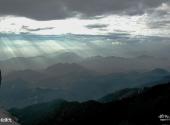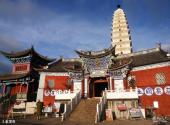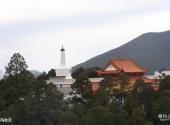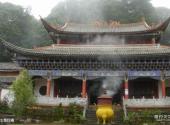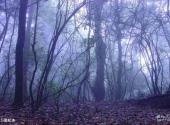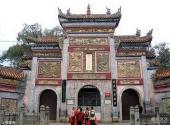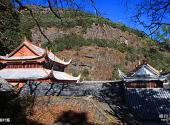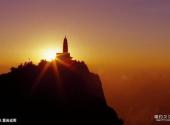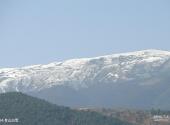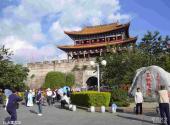
Scenic spot introduction:
Binchuan Jizu Mountain is one of the five famous Buddhist mountains in my country, a famous Buddhist holy land in Southeast Asia, the intersection of Chinese and Tibetan Buddhism, and the birthplace of Zen Buddhism in the world. It is known as "the most beautiful chicken foot in the world", "Lingshan Buddhist capital and tourist resort", "Tiankai Buddhist country", "the first Foshan in China" and so on.Attractions distribution:
Jizu Mountain Scenic Area is located in Liandong Township, Binchuan County, Dali Bai Autonomous Prefecture. It is also known as Jiuquya and Qingdian Mountain. The total area of the scenic area is 2822 hectares and the highest altitude is 3248 meters. Because it has three peaks in the front and one ridge in the back, it is shaped like a chicken. Foot, hence the name Jizu Mountain.Because Jizu Mountain was far away from the center in ancient times, "the ancient emperors could not visit more than the four mountains, and the god Yu could not cross Minshan Mountain because of his lack of resources." What's more, literati cannot reach far," so "there are no traces in the wilderness" and "there are very few records of previous sages." Even Song officials who wrote about the famous places in southern Yunnan in the "Dongtian Blessed Land" also "criticized but did not record them." Although it is so inaccessible, the Buddhist culture of Jizu Mountain has been introduced in the Shu Han Dynasty, when a small nunnery was built in the mountain; Xuanzang's "Records of the Western Regions of the Tang Dynasty" of the Tang Dynasty records: "Kasyapa has been ordered to preside over the dharma. After twenty years, I was tired of the impermanence of the world and was about to enter Nirvana, so I went to Jizu Mountain. "Kasyapa was one of the ten disciples of Sakyamuni. The Jizu Mountain where he entered meditation was actually in the Kingdom of Magadha in India, the Chicken of China. Zushan was attached and imitated by monks, and it was also recorded in the history of Chinese Buddhism as Kasyapa Dojo. By the Ming Dynasty, monks and nuns gathered on the mountain, and Buddhist services were at their peak. By the Qing Dynasty, there were 36 temples and 72 nunneries here. There are more than 5,000 resident monks and nuns.
The development of Buddhism in Jizu Mountain may be related to the development of the south. The political center of the Southern Song Dynasty moved south, and Jizu Mountain gradually became known to more people. By the Ming Dynasty, it became even more famous; secondly, many Monks come to Kasyapa Dojo; thirdly, the natural environment here is remote and beautiful, suitable for meditation; fourthly, it is a gathering place for Chinese Buddhism, Tibetan Buddhism and Yunnan Theravada Buddhism.
Jizu Mountain has a total of 40 strange mountains, 30 dangerous peaks, 34 cliffs, 45 secluded caves, and more than 100 springs and pools. The natural landscape and cultural landscape complement each other. There is a bird in the mountain (the Buddha chanting bird - Incense Sparrow) ), Two Teas (Lion Head, Camellia Tongpiensis), Three Dragons (Dragon Palm, Dragon Bamboo, Dragon Claw Rhododendron), Four Views (Dongri, Xihai, Nanyun, Beixue), Wushan (Fir, Oil Cedar) , cryptomeria, yew, fir), six treasures (bamboo shoots, cold mushrooms, chestnuts, rock ginseng, sweet mushrooms, white fungus), seven beasts (monkey, blue sheep, deer, leopard, bear, wild boar, deer), eight sceneries (Tianzhu Buddha's light, Huashou Qinglei, Cangshan snow, Erhai Lake Huilan, waterfalls through the clouds, thousands of valleys with pines and waves, heavy cliffs reflecting the light, pagoda courtyard autumn moon) and many other scenic spots.
Scenic spot qualifications:
National 4A-level scenic spotScenic spot features:
Buddhist holy places, monuments, temples, religions, famous mountainsTour route:
Zhusheng Temple → Huiden Temple → Jinding Temple → Huashoumen → Kasyapa Hall
Best time to visit:
March-April is the best time every year, because many festivals and events of the Bai people are concentrated between March and April.
Shopping recommendations:
Bai batik, Dengchuan milk fan, Xiaguan Tuocha, Dali snow pear, Dali snow pear, Yunyan, etc.
Scenic spot location:
China>Yunnan Province>Dali Bai Autonomous Prefecture>Binchuan County
How to get there:
Tourists can take a direct long-distance bus from Kunming to Binchuan County, or take a minibus in Dali city to Binchuan County. Jinniu Town, where the county seat is located, has several minibuses running to and from Jizu Mountain every day. The ticket is 10 yuan and the journey takes about 2 hours.
Scenic area map:
Click to expand the scenic area map
Jizu Mountain ticket price:
60 yuan/person.
Students get half-price discount with student ID.
Scenic area opening hours:
7:00-19:00.

